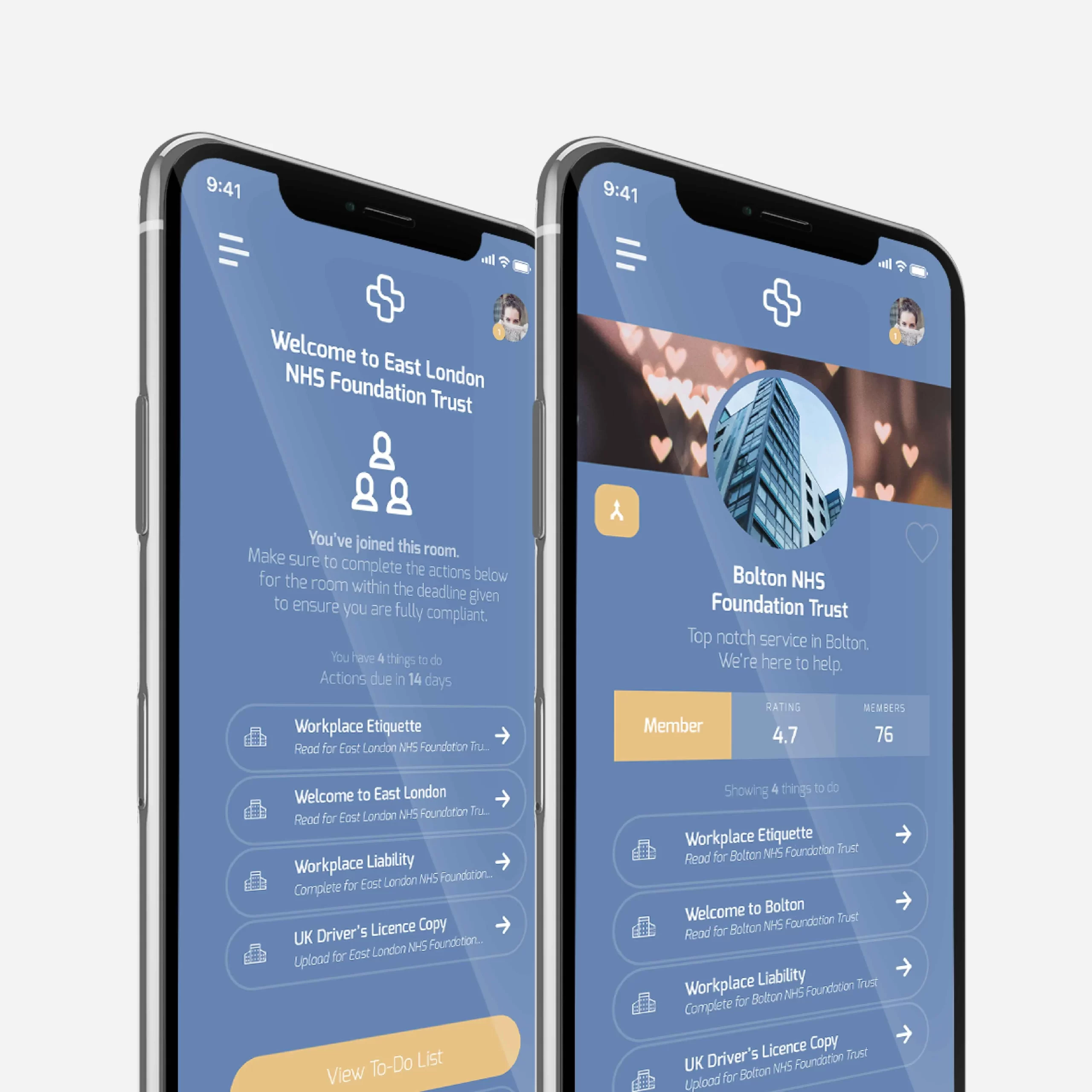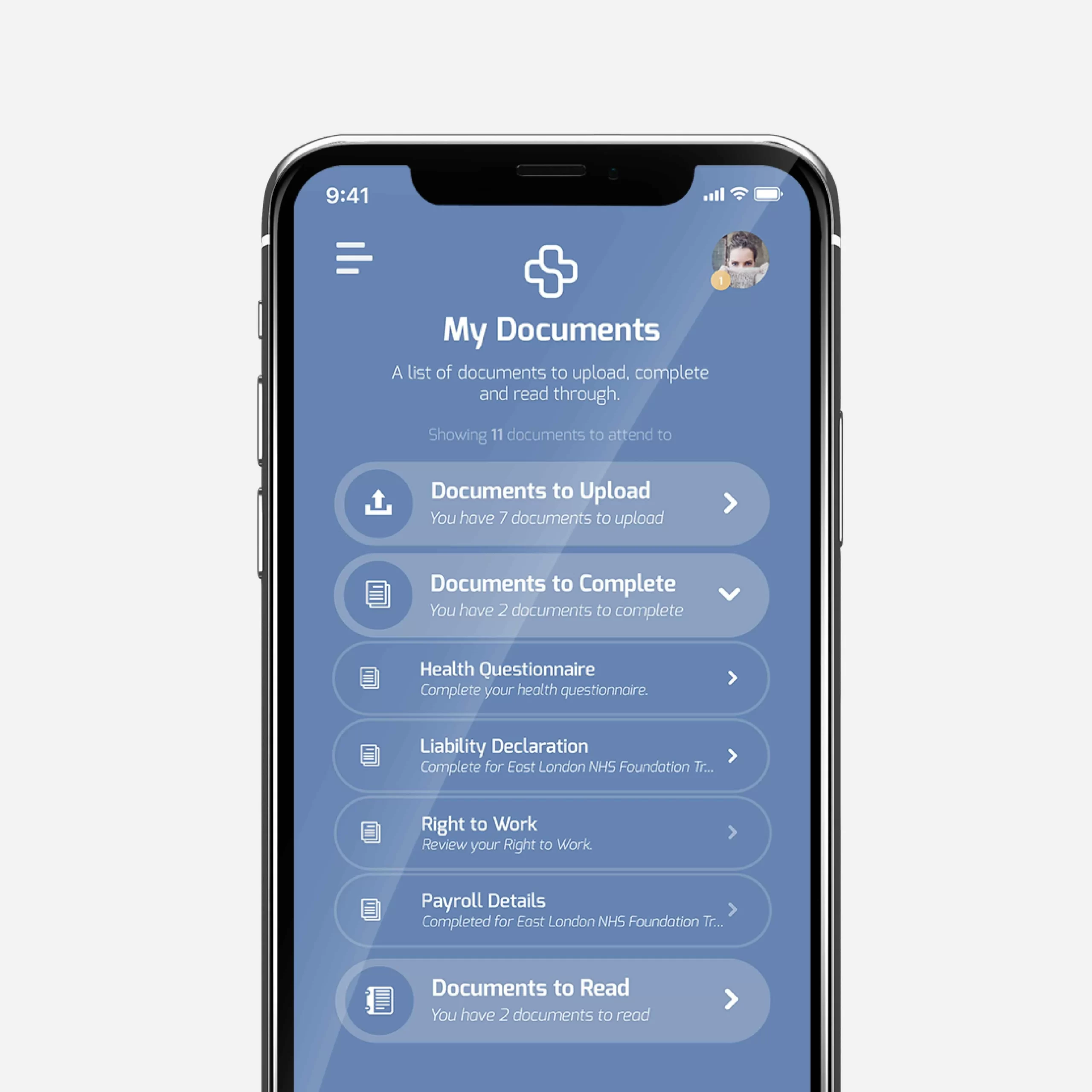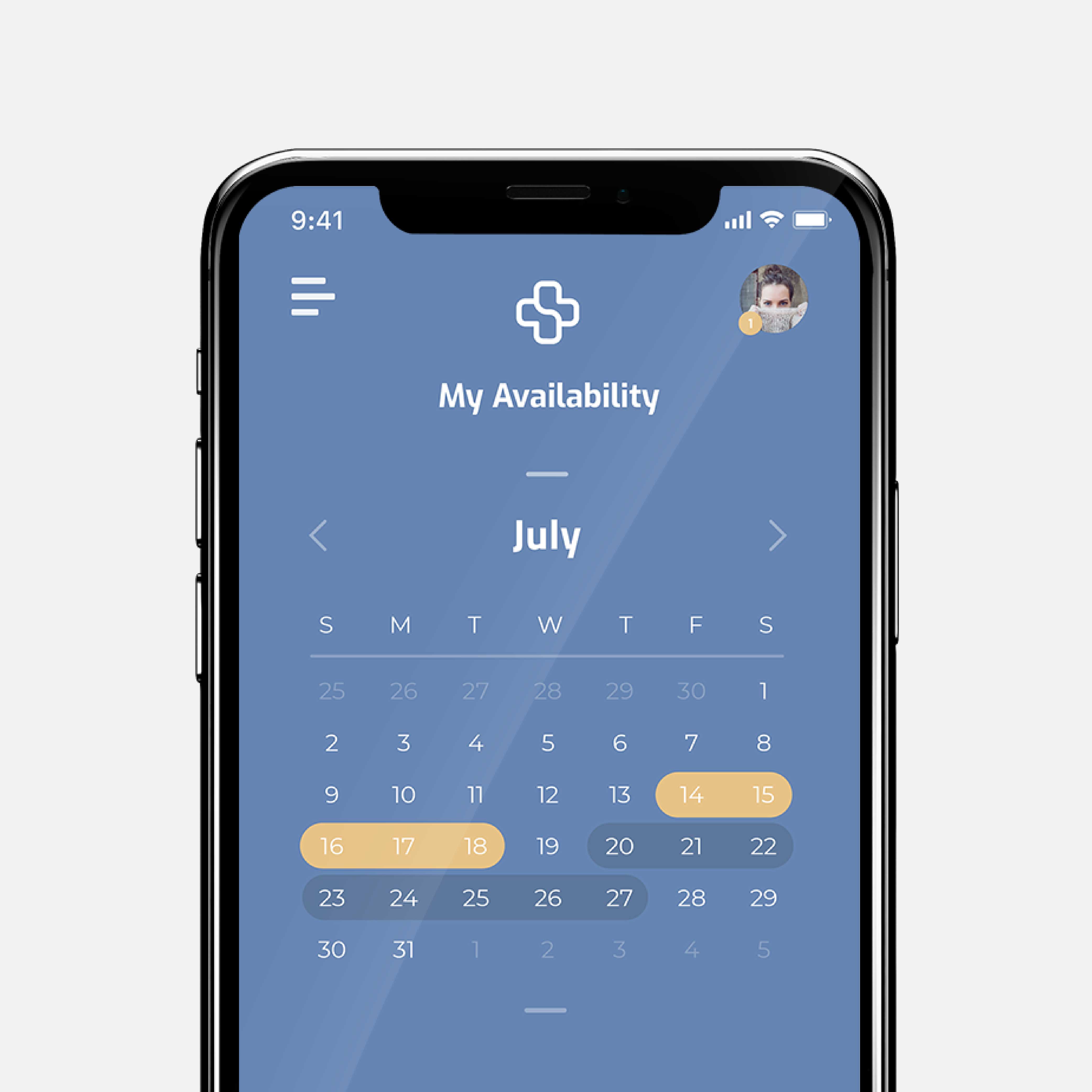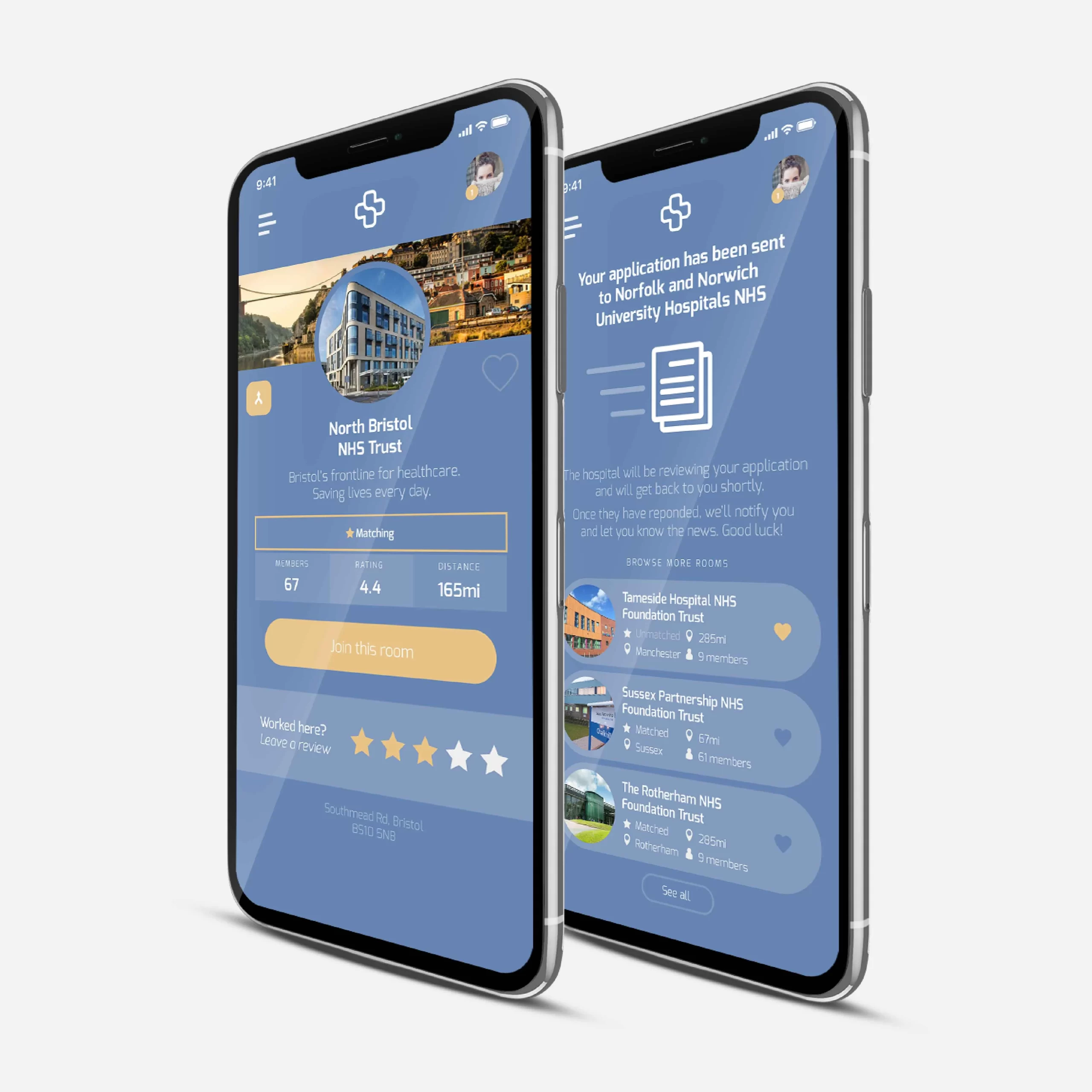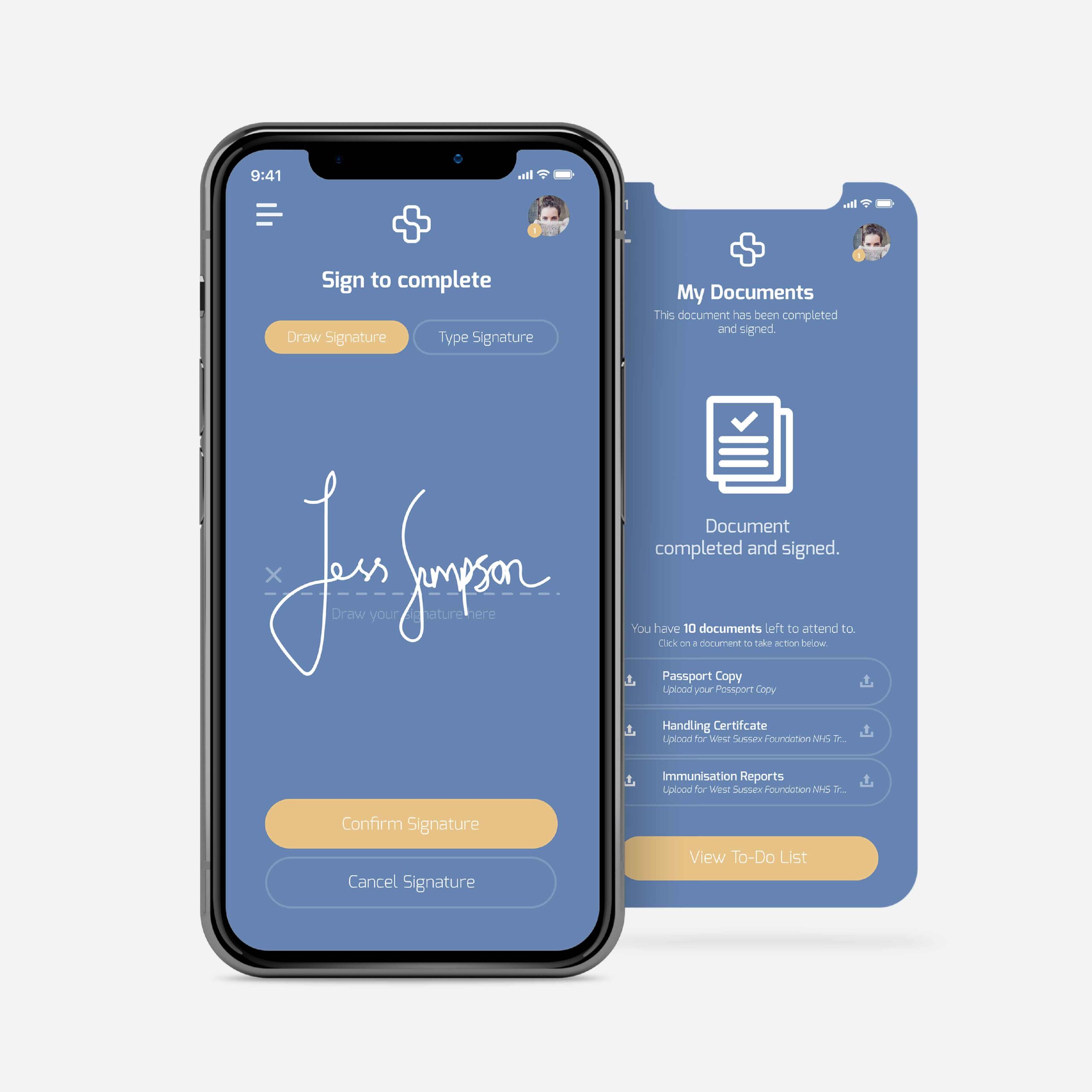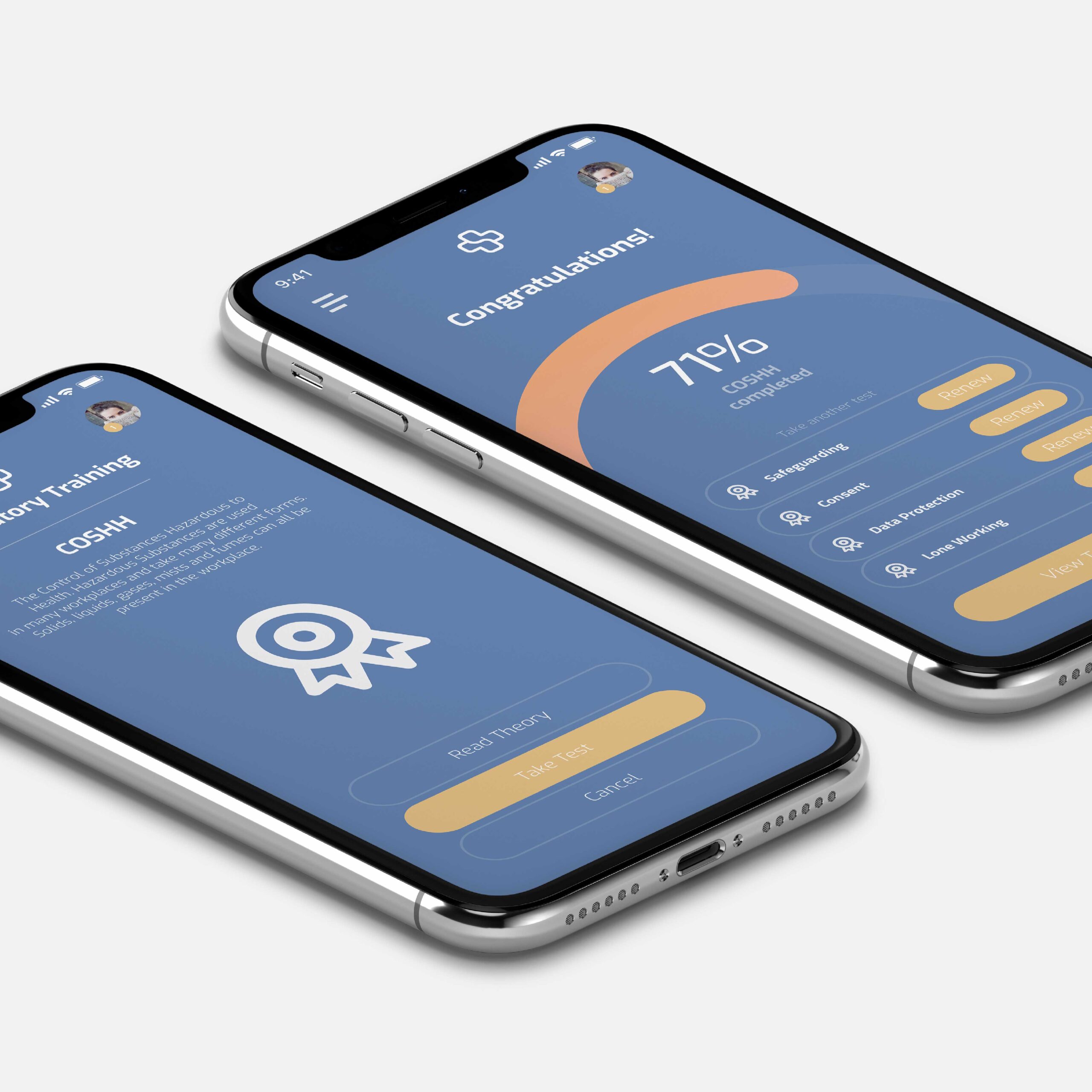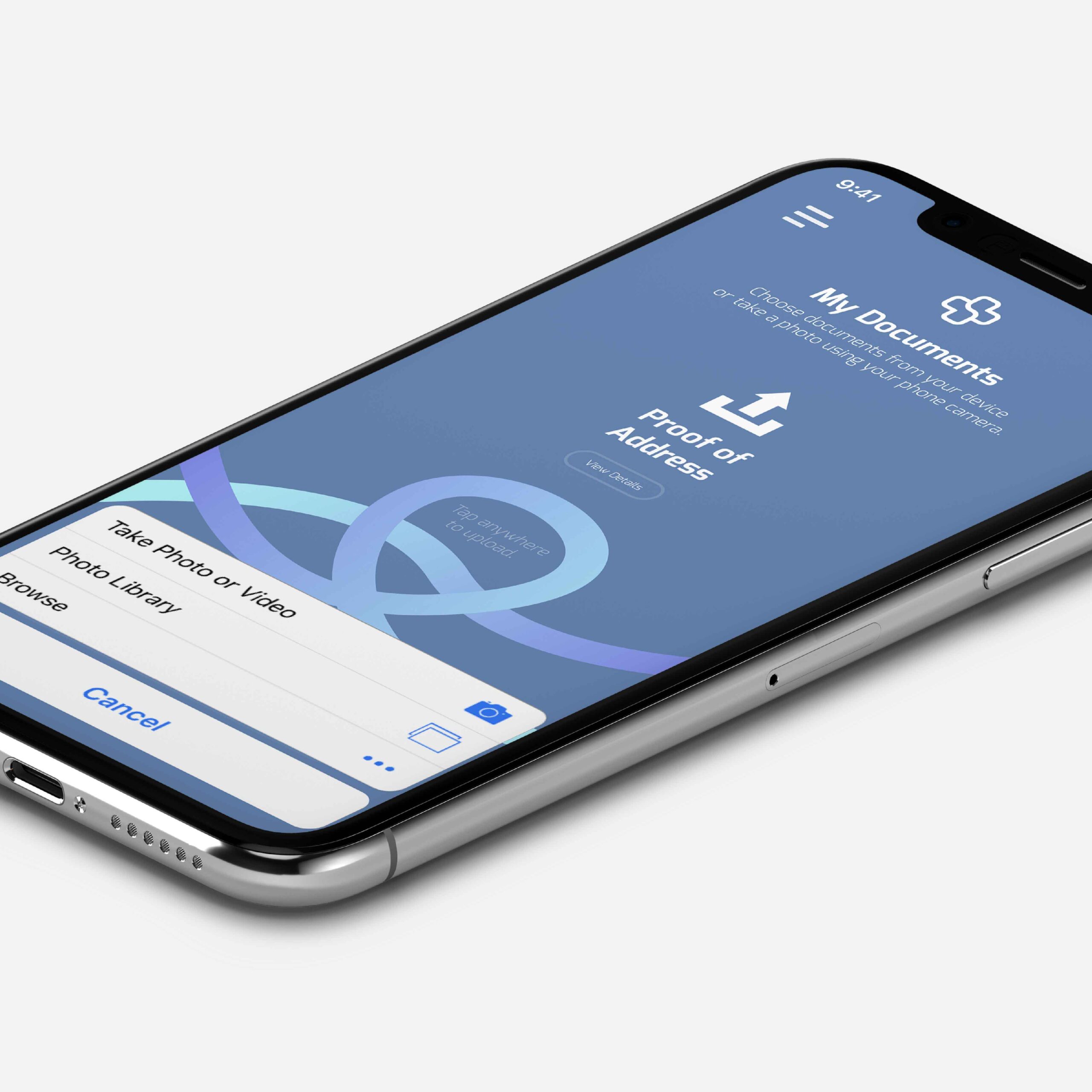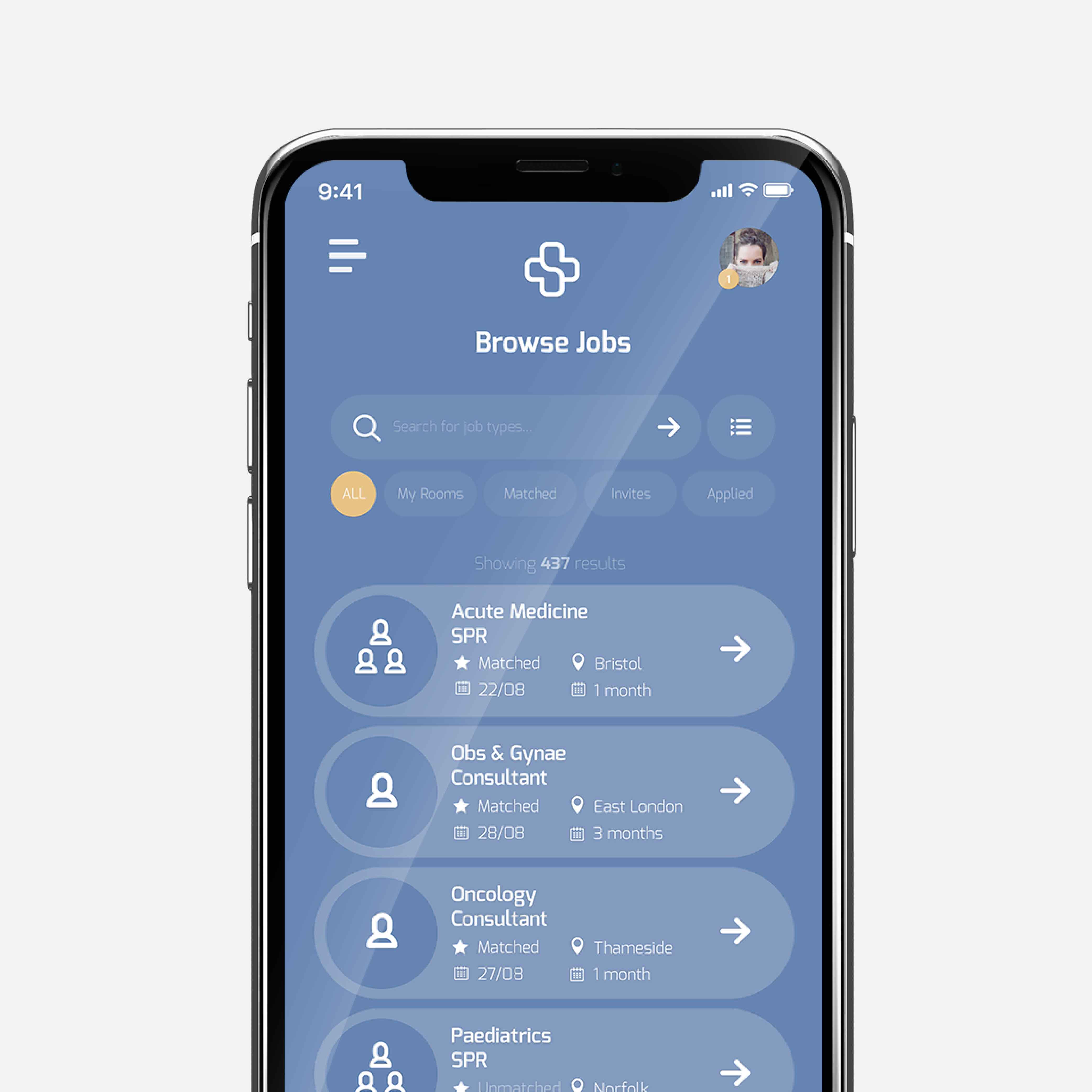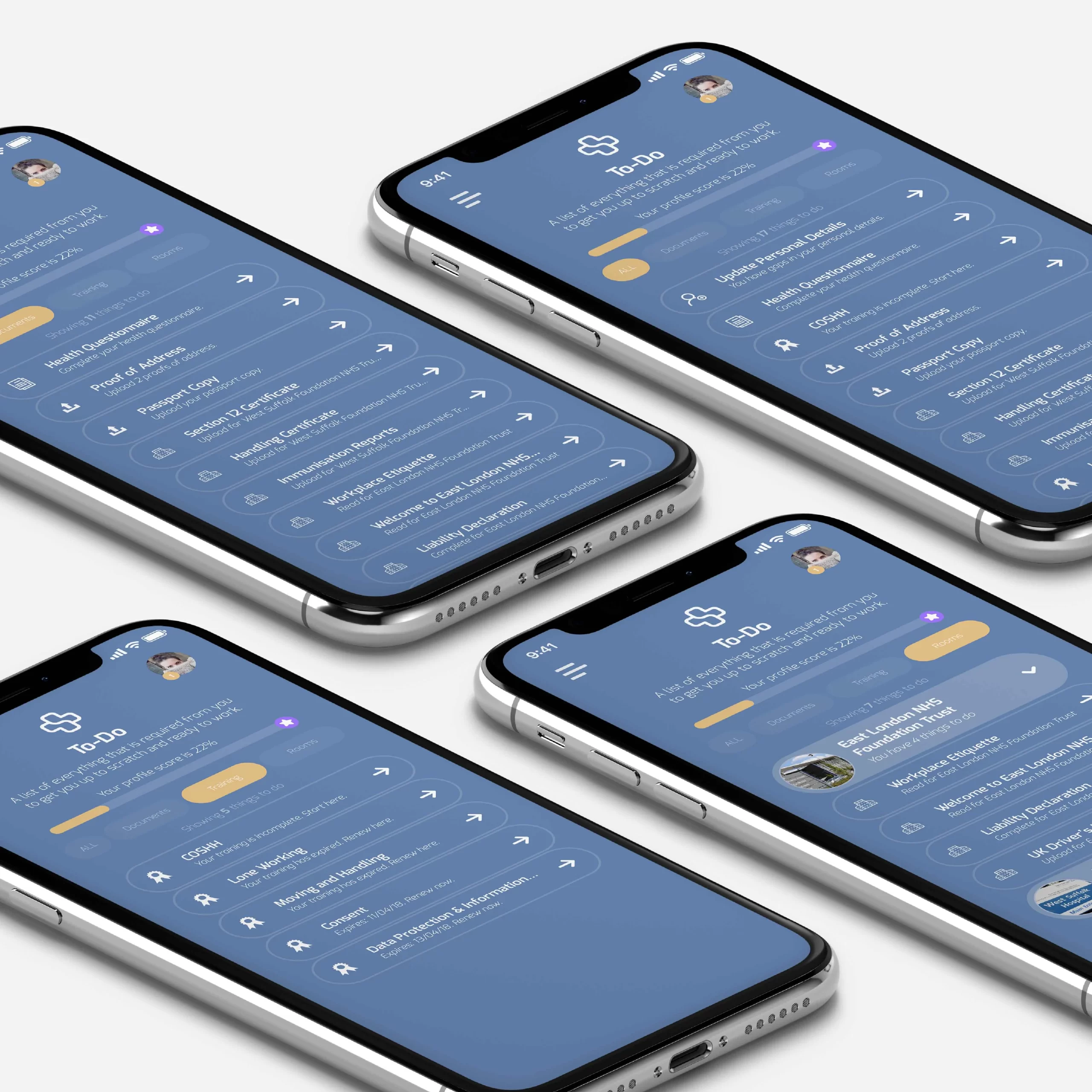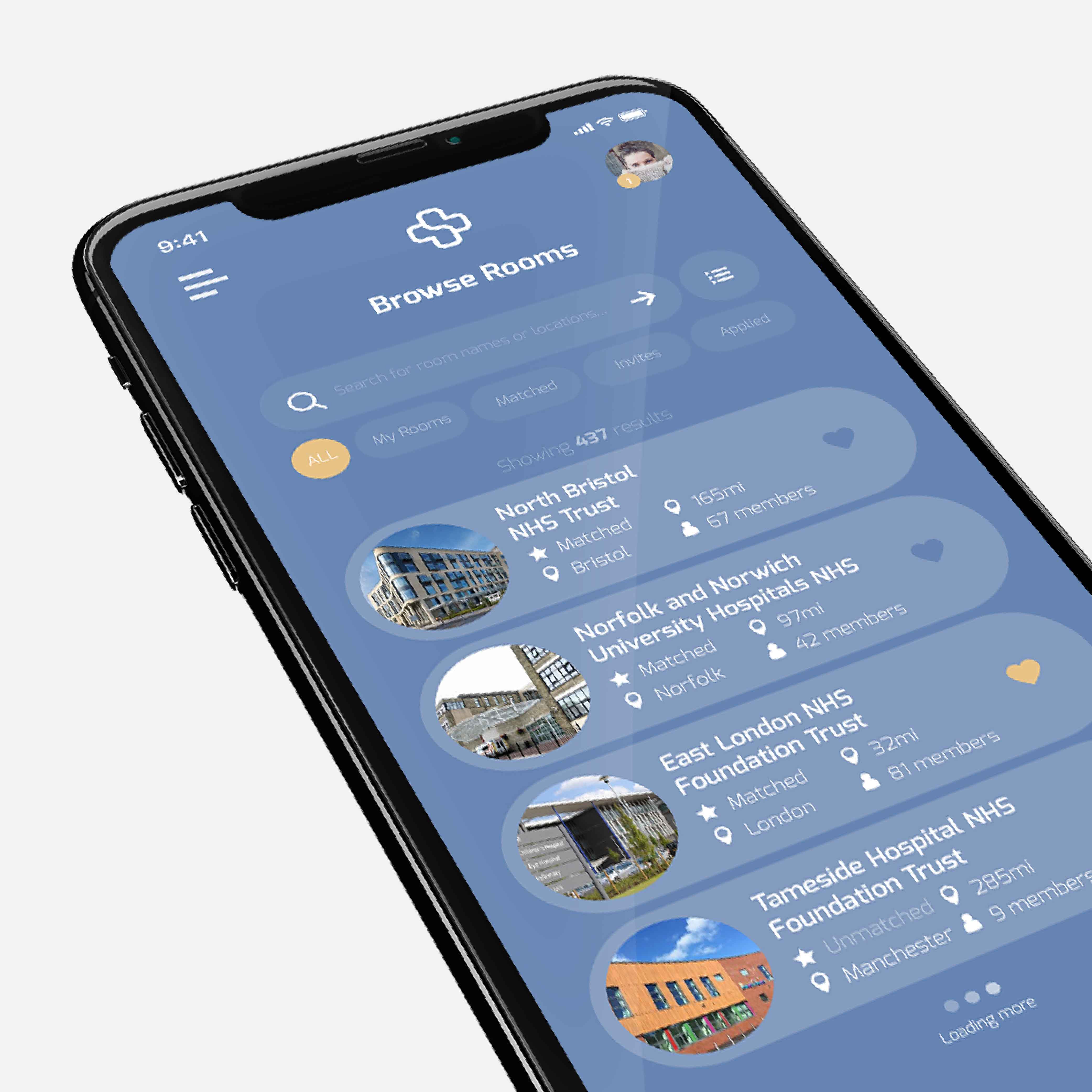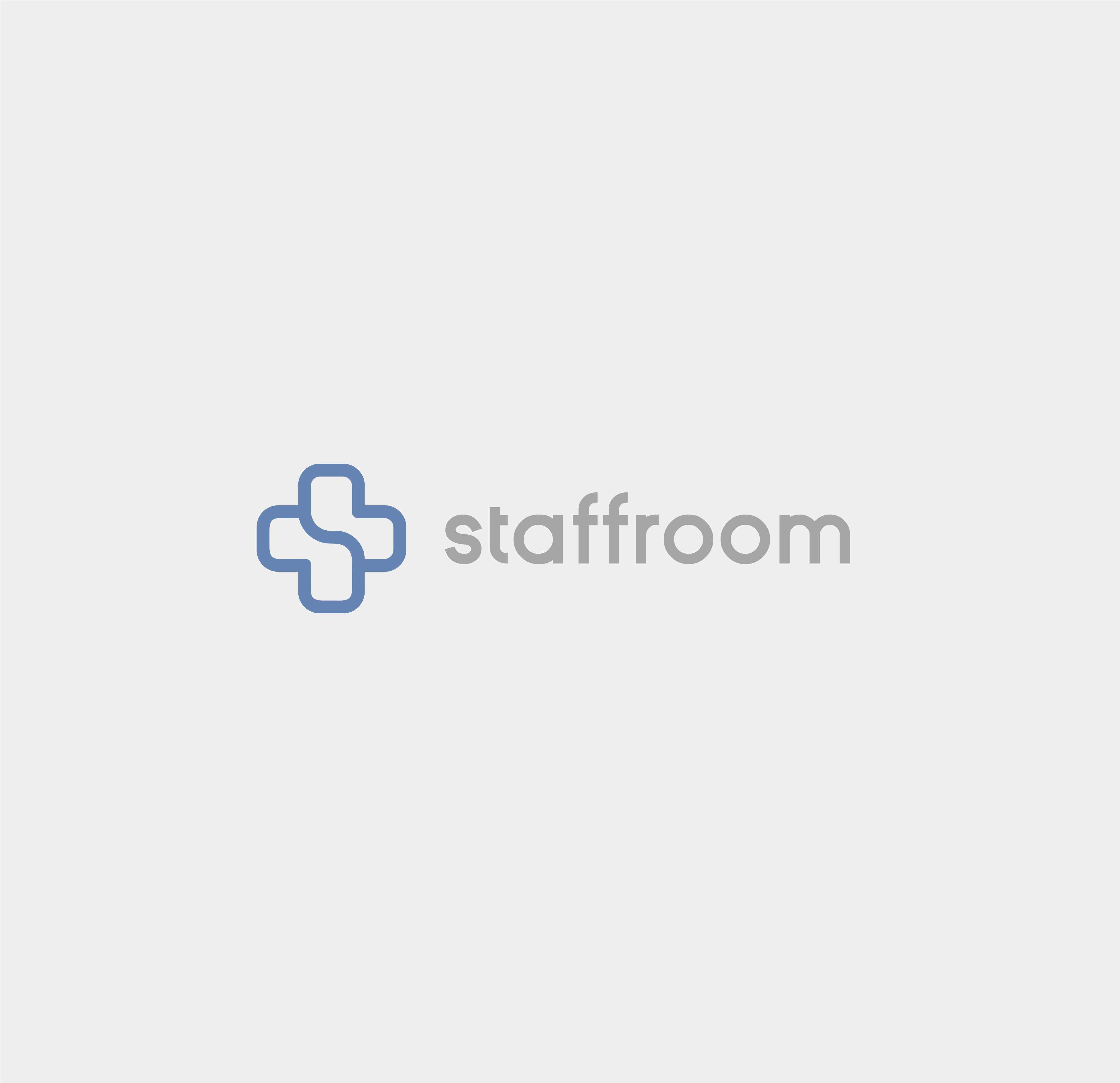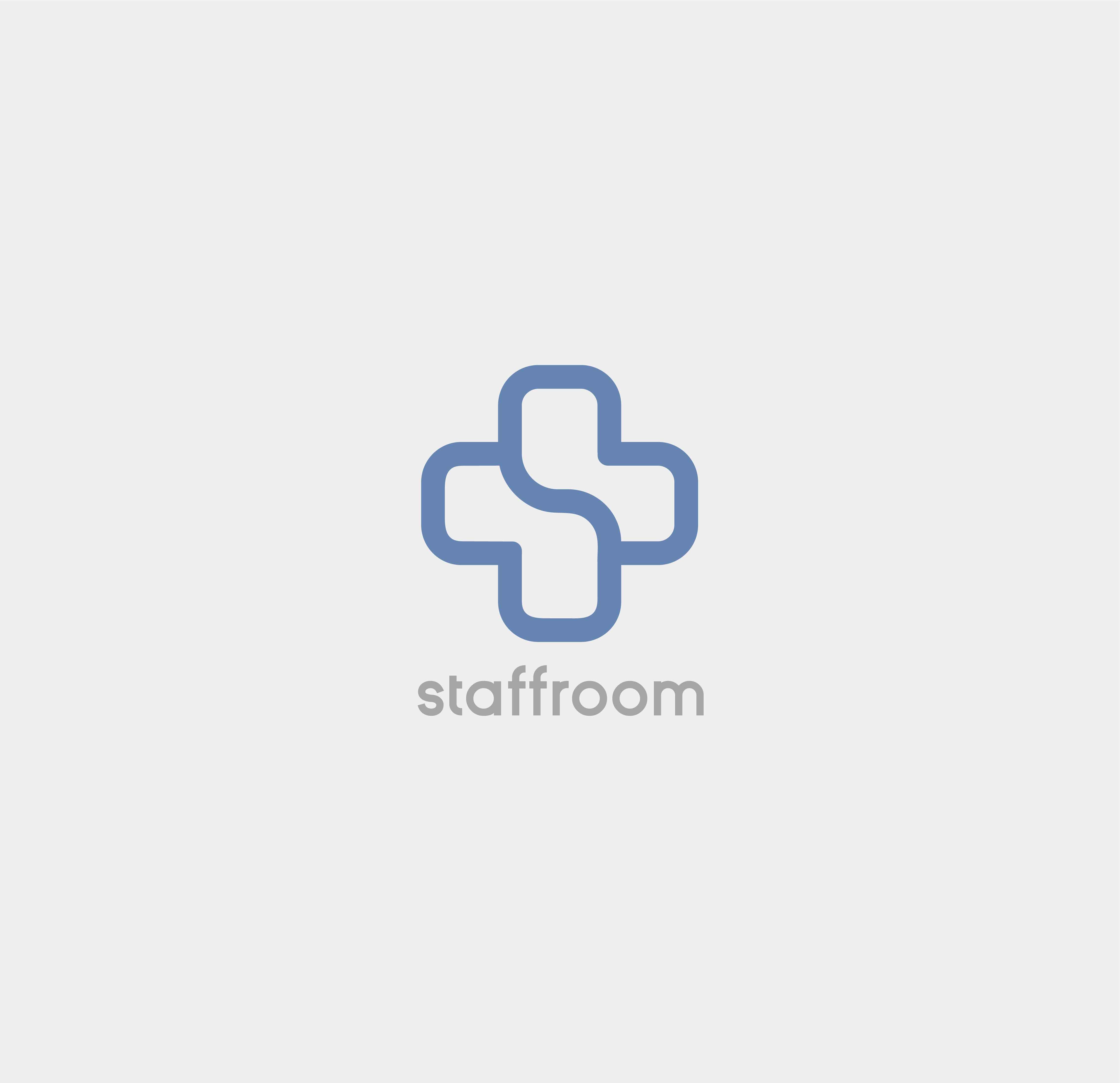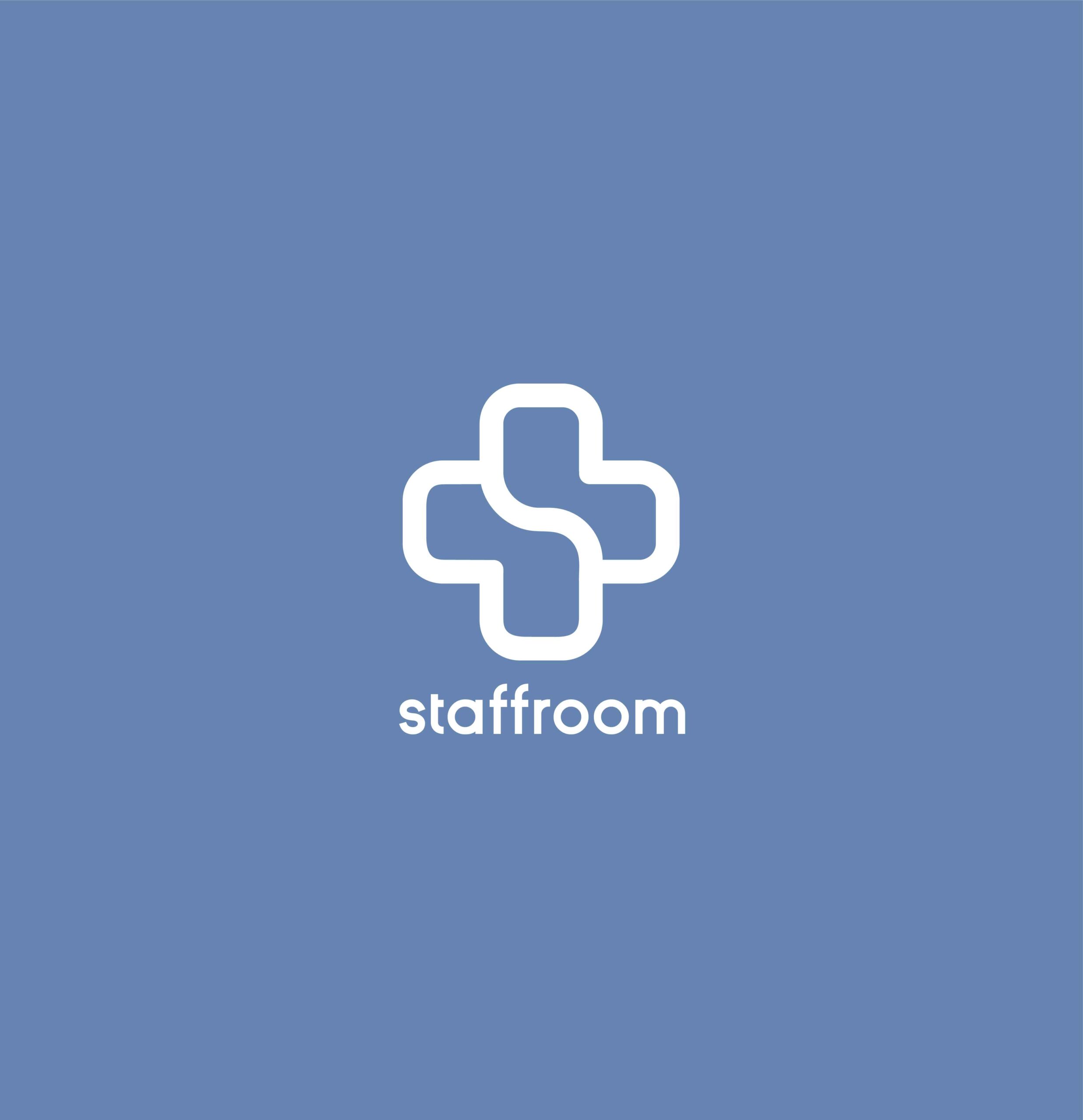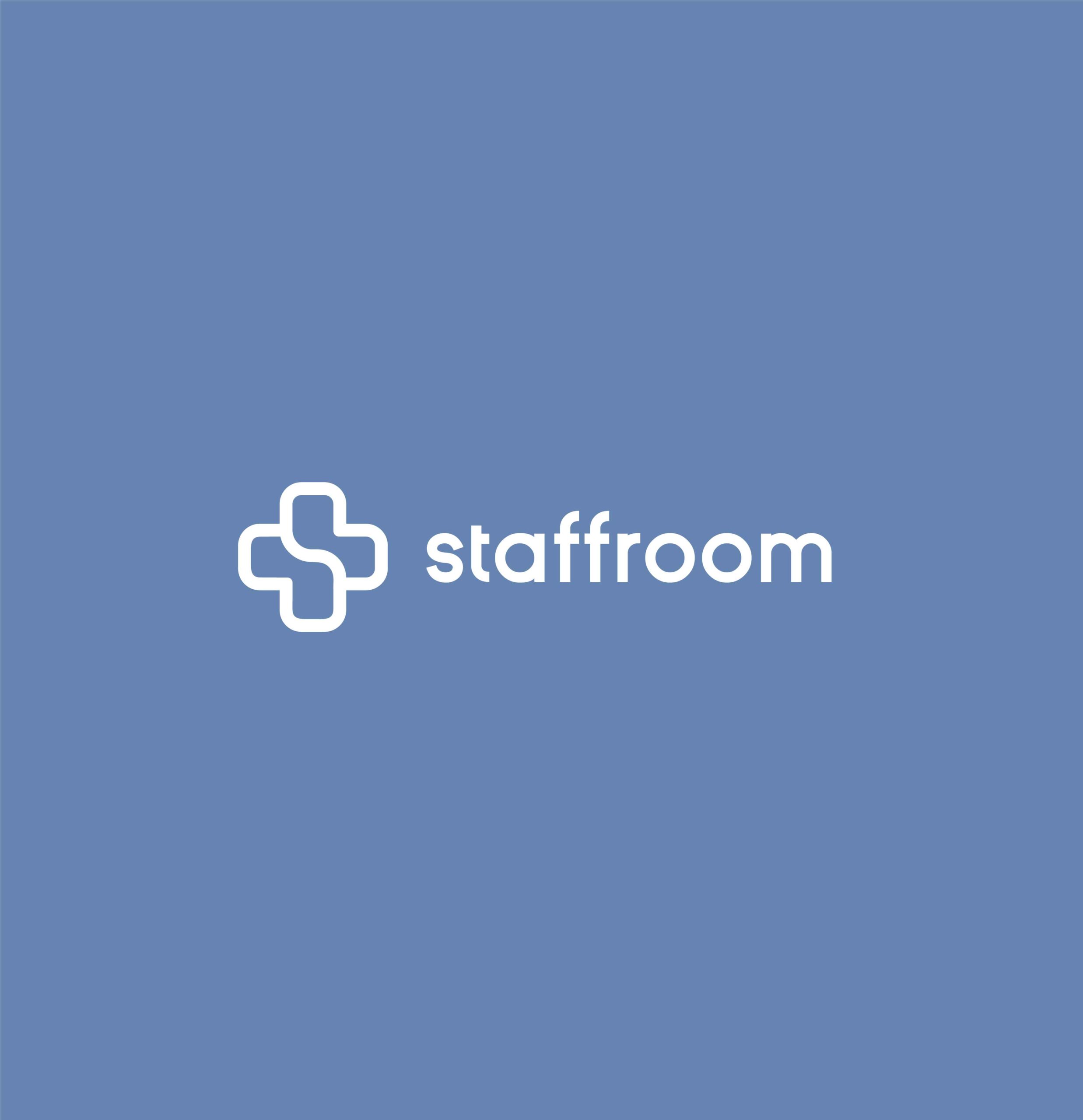PORTFOLIO
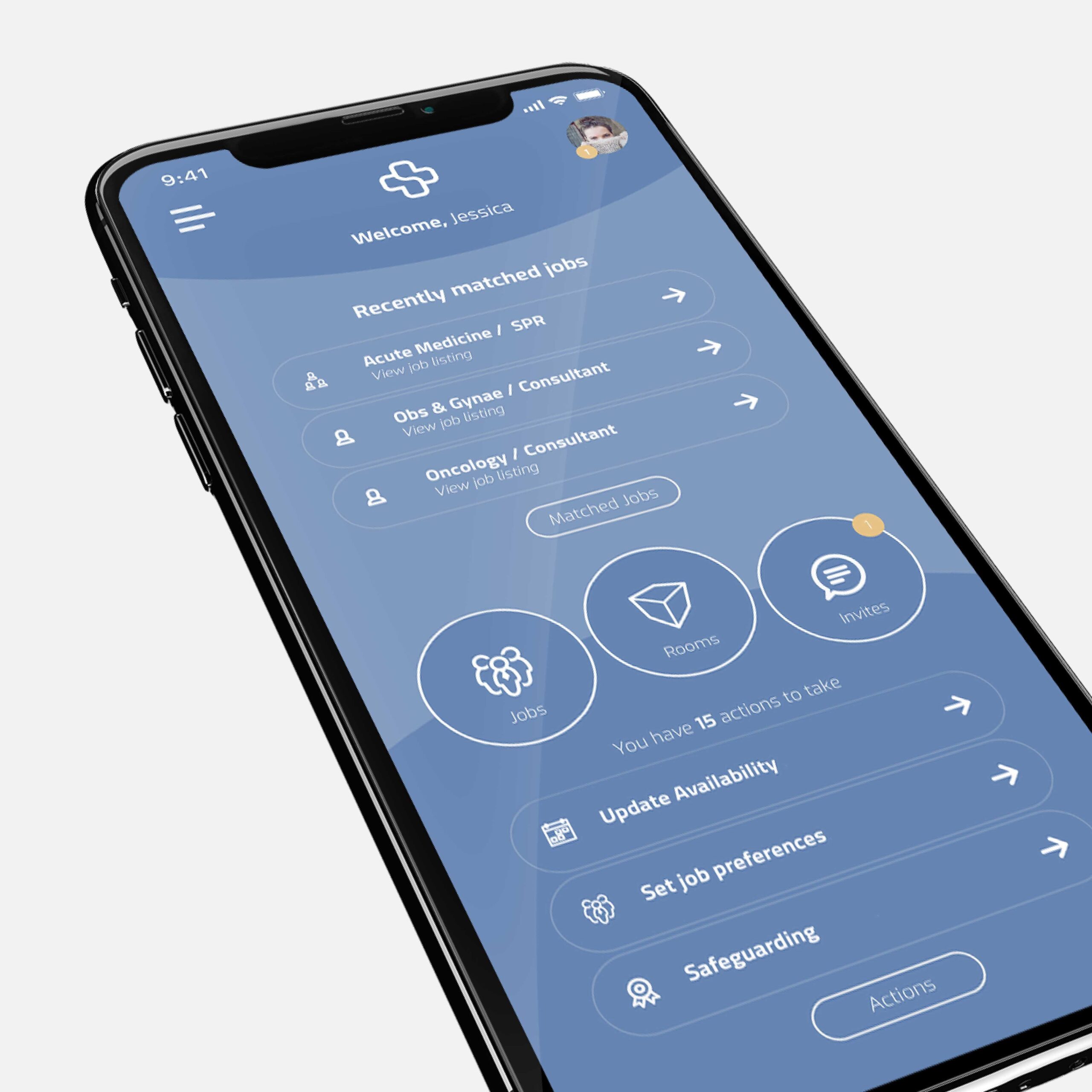
Project Name
Staffroom
My Role
Head of Product
Including the add-ons:

Problem Statement
My Approach
1. Market Research
- The bank model – Hospitals maintain their own pool of candidates and engage directly for seasonal or ad-hoc employment.
- The agency model – Agencies can be awarded to supply to hospitals.
- Tech start ups – Direct to NHS supply and workforce management start ups.
The bank model relies on a constant flow of new candidates and on online systems for the compliance and management of workforce. However, often systems are inadequate and offer a terrible user experience. Candidates need to sign up and go through the compliance process for each NHS hospital individually. NHS hospitals invest to increase their bank of candidates and reduce agency costs. This is where the very few tech start ups come in. They are in direct competition with the agency model. They are are well funded and their digital offering is advanced and user friendly, however they still amount for a very small percentage of the supply of the NHS. It is estimated that the agency model still amounts for 90% of the supply.
2. User Research
User Research
I set up interviews with ten temporary healthcare professionals from different specialities, grades, seniority, region who where either working through an agency or directly for the NHS.
Key findings
- Most temporary healthcare professionals work with 2-5 hospitals
- Many have signed up for a NHS hospital bank before, but continued to work through an agency.
- They are signed up and receive work from 2-3 agencies to access a wider choice of opportunities
- 50% are happy to travel distances greater to work in other parts of the UK, and 50% tends to work locally (within 30 miles)
Customer Research
One of the areas that I needed to learn more to complete my vision was the NHS needs and requirements. Thanks to the kind contribution of two NHS trusts I was able to arrange interviews with HR and staffing departments to find out more from the people who manage temporary and permanent NHS recruitment. While I got to find out more about the on-boarding, compliance and hiring processes of NHS, I also had the chance to review NHS legacy systems used to manage bank staff.
Key findings
- On boarding and compliance processes defer from hospital to hospital
- NHS systems for the management of temporary workers are inadequate and offer a terrible user experience.
- Many professionals sign up to a NHS hospital bank but never get compliant or work for the hospital
- They use at least 10-20 agencies to find healthcare staff of all specialities
3. Define Product Goals
NHS deliverables
- Access to a large pool of compliant healthcare professionals
- Easy management of approved agencies
- Powerful custom on-boarding processes
- Sophisticated compliance tools for new and existing agency and bank staff
- Advanced workforce and spend analytics
User deliverables
- Easy access to join the NHS hospitals of their choice and receive all available shifts and short term opportunities.
- User friendly compliance processes that can be completed on web and mobile
- Apply and confirm bookings directly with the hospital
- Online training and CPD points
Agency deliverables
- Supply through the platform to existing and new hospitals
- Advanced compliance tools that can reduce company costs of getting candidates compliant
- Automatic invoicing and payments
4. Prototype and Test
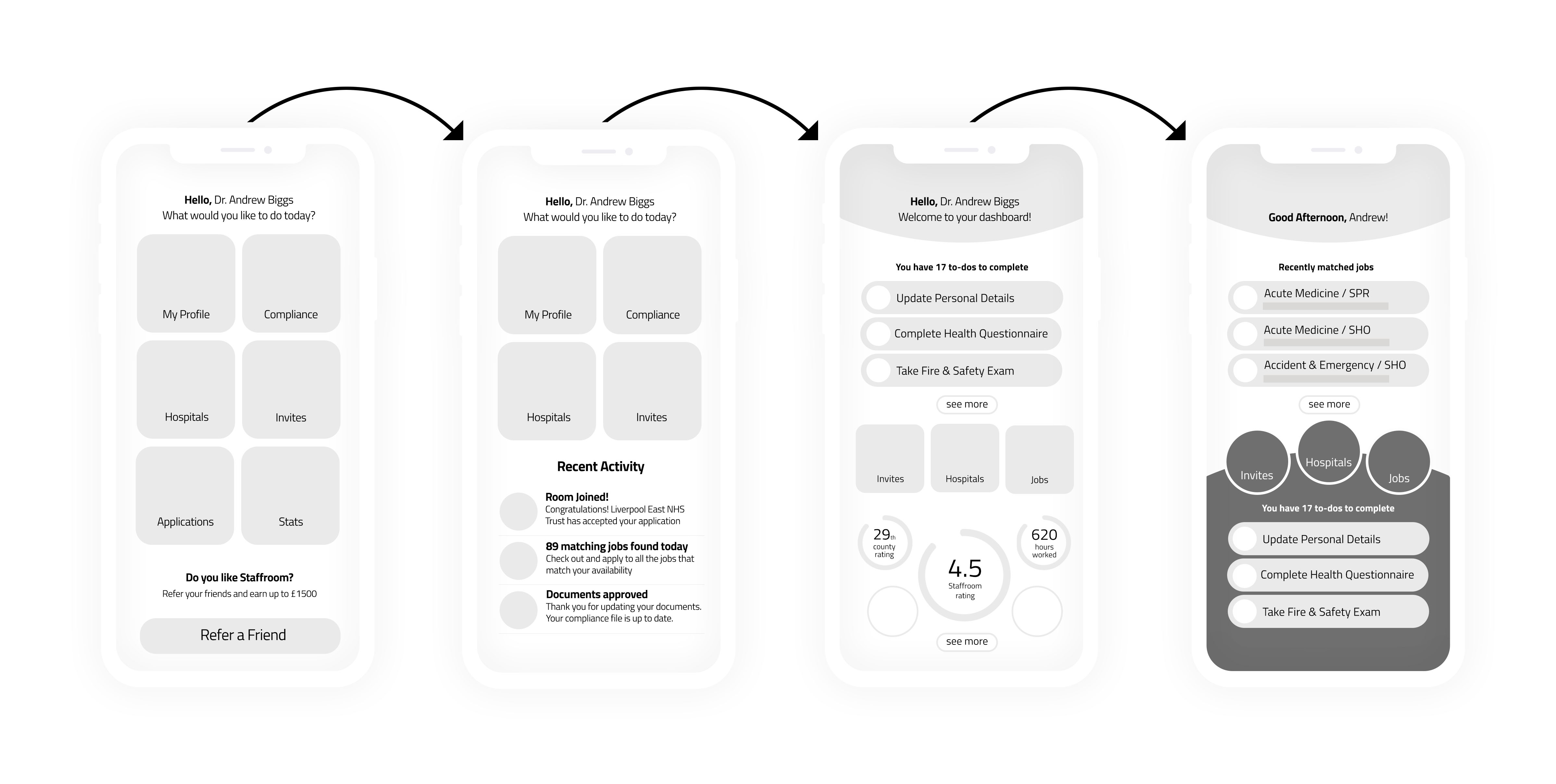
Universal To-Do's
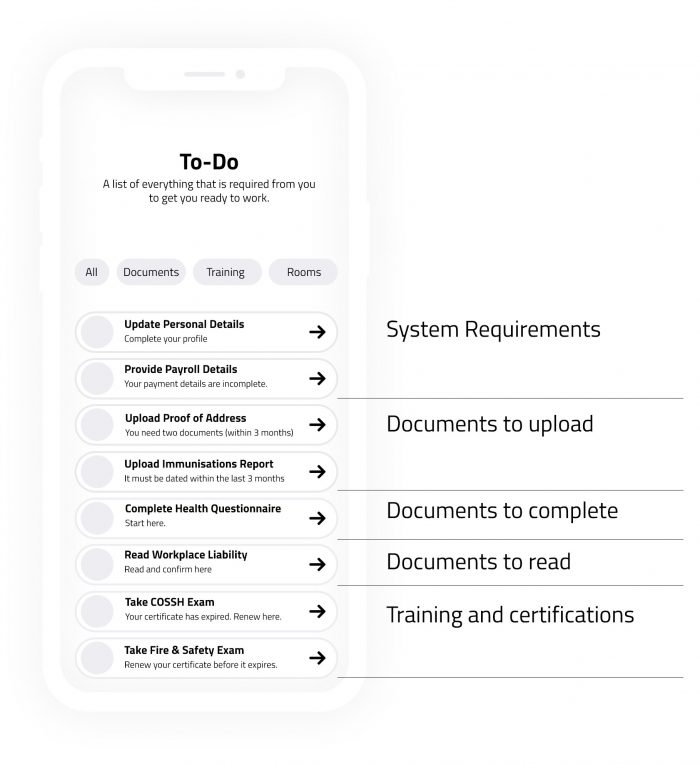
To-Do Loops
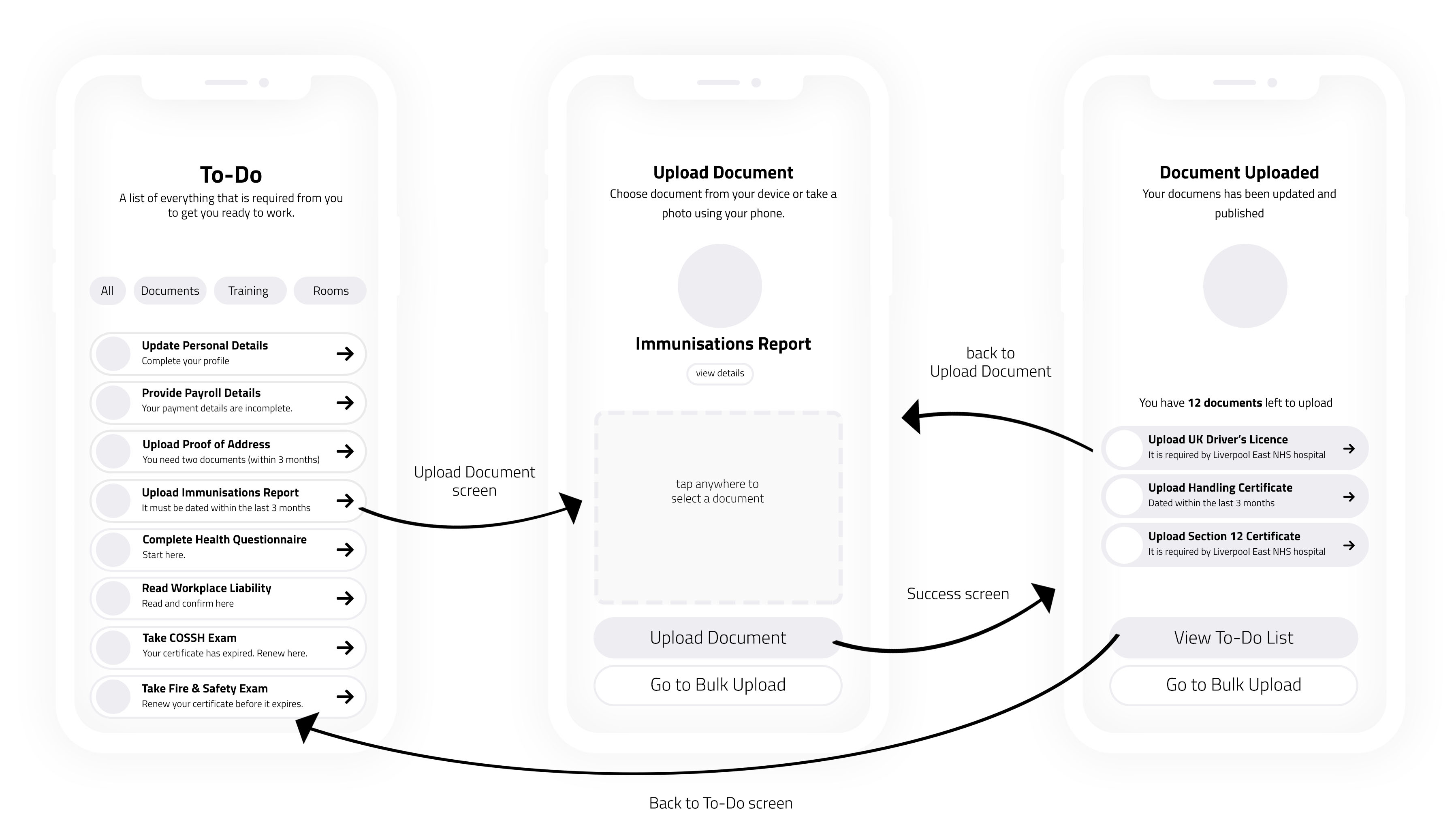
Bulk Uploader



Training and Certifications
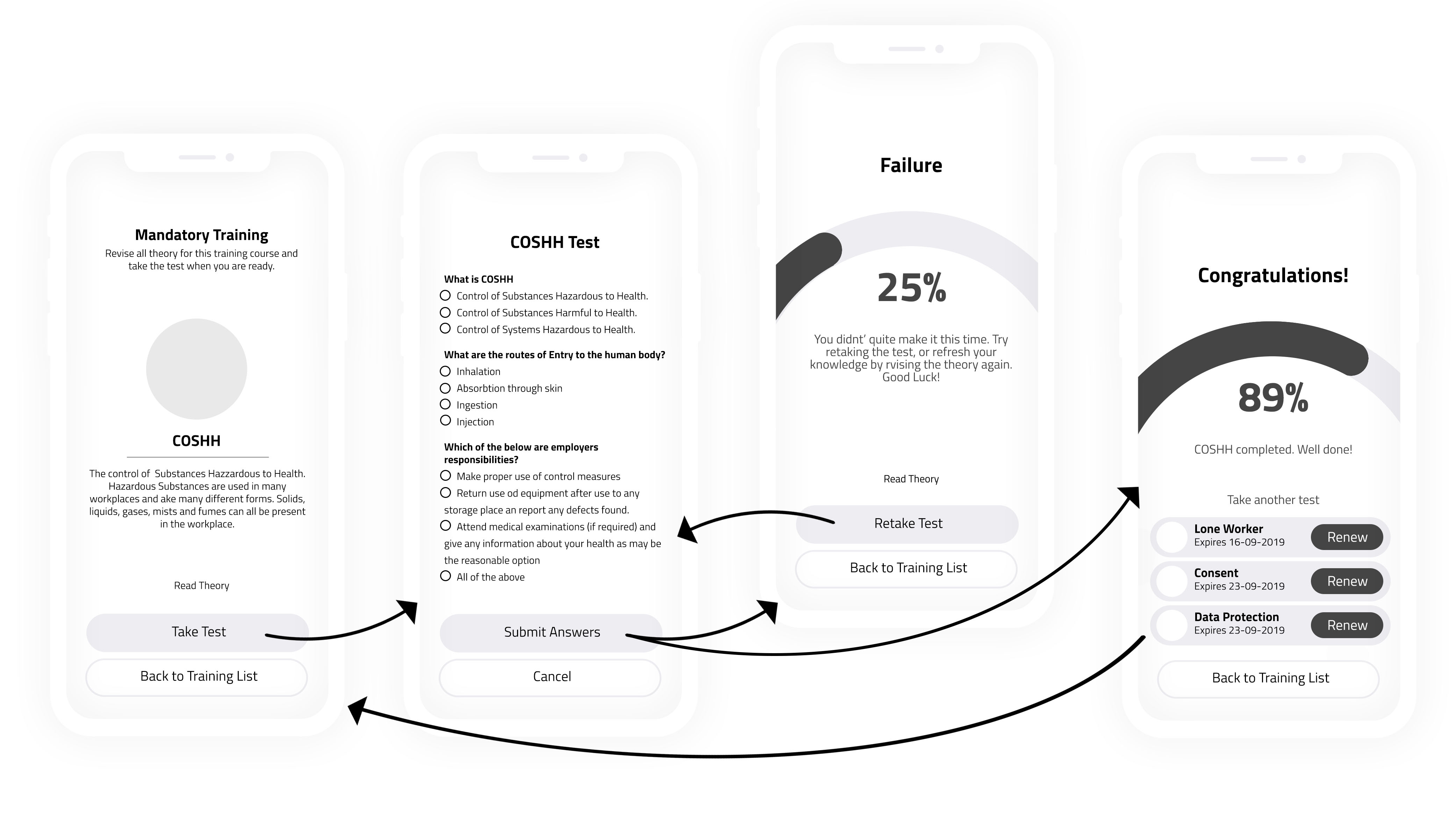
Client Dashboard
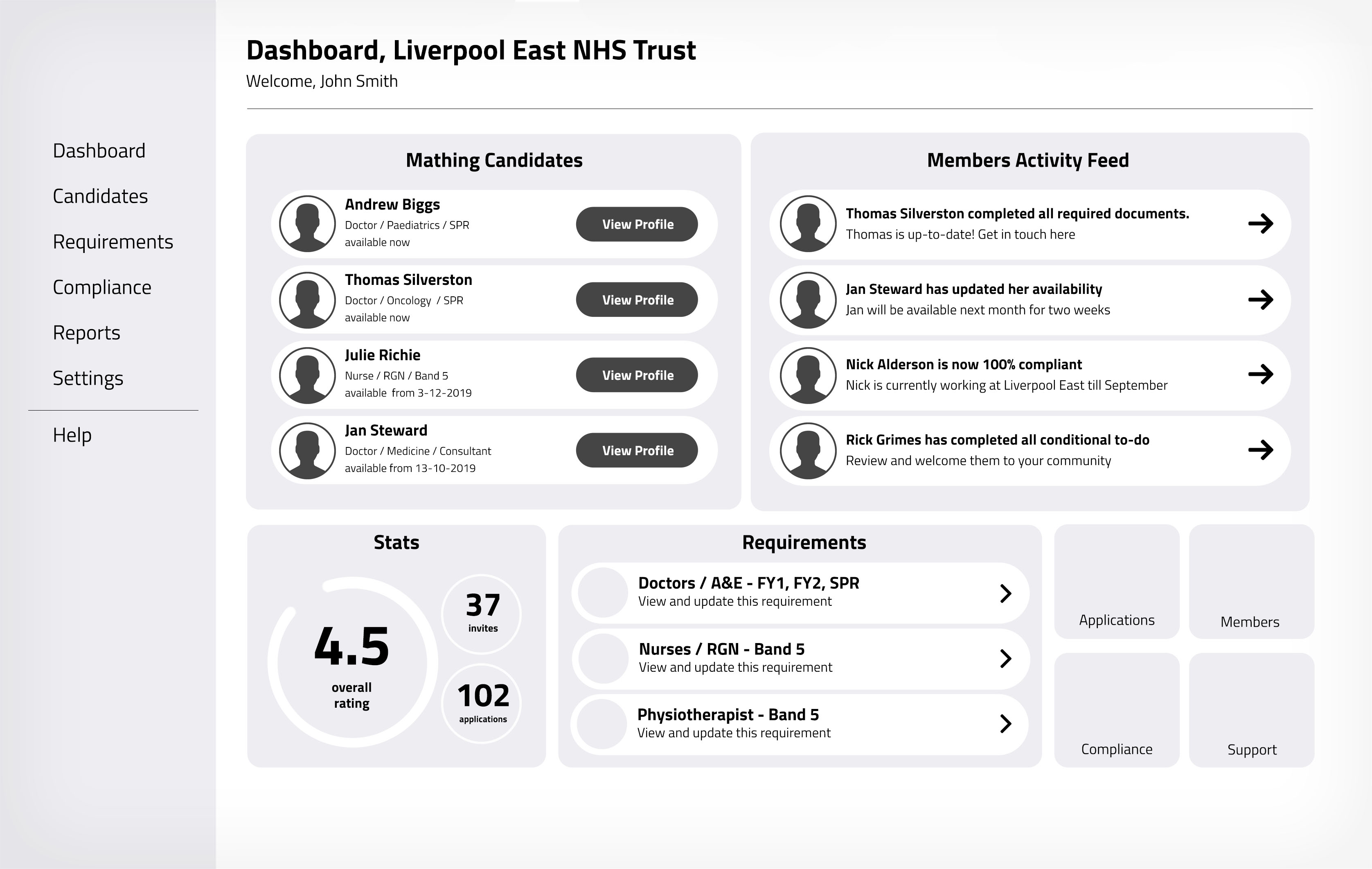
Compliance




Requirements






Interactions and Notifications




5. Test and Optimise
What We Delivered
Rooms for every occasion
Hospitals can manage temporary workers
Agencies can supply candidates
Candidates can manage their whole career
Custom to-do lists
Advance compliance tools
Post jobs and fill shifts quick
